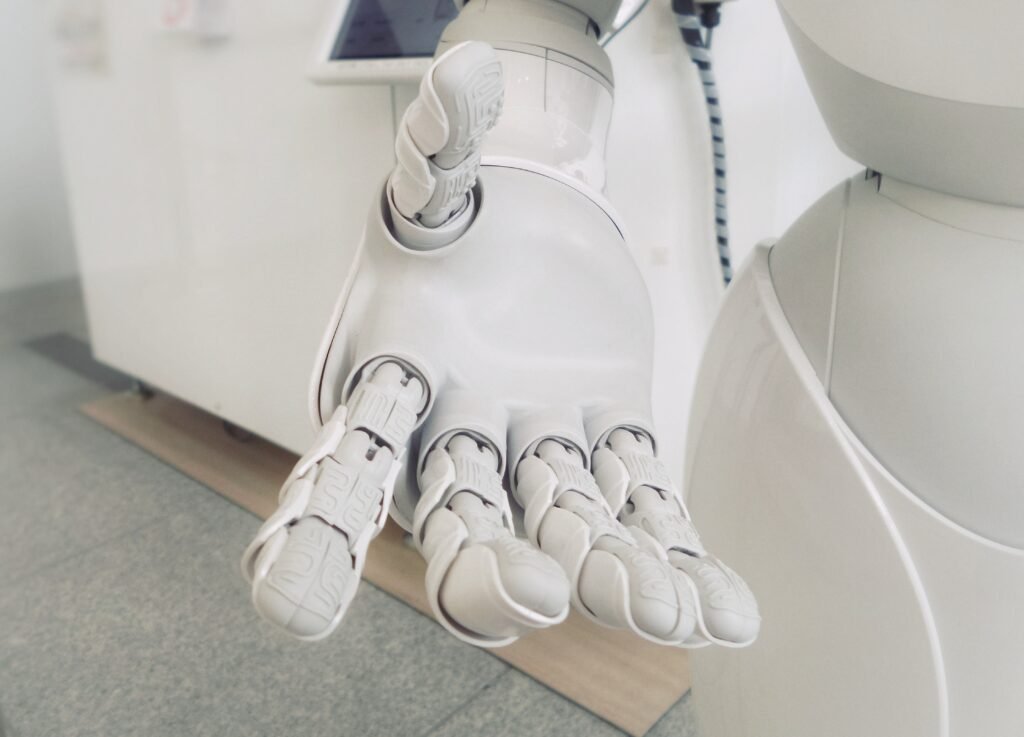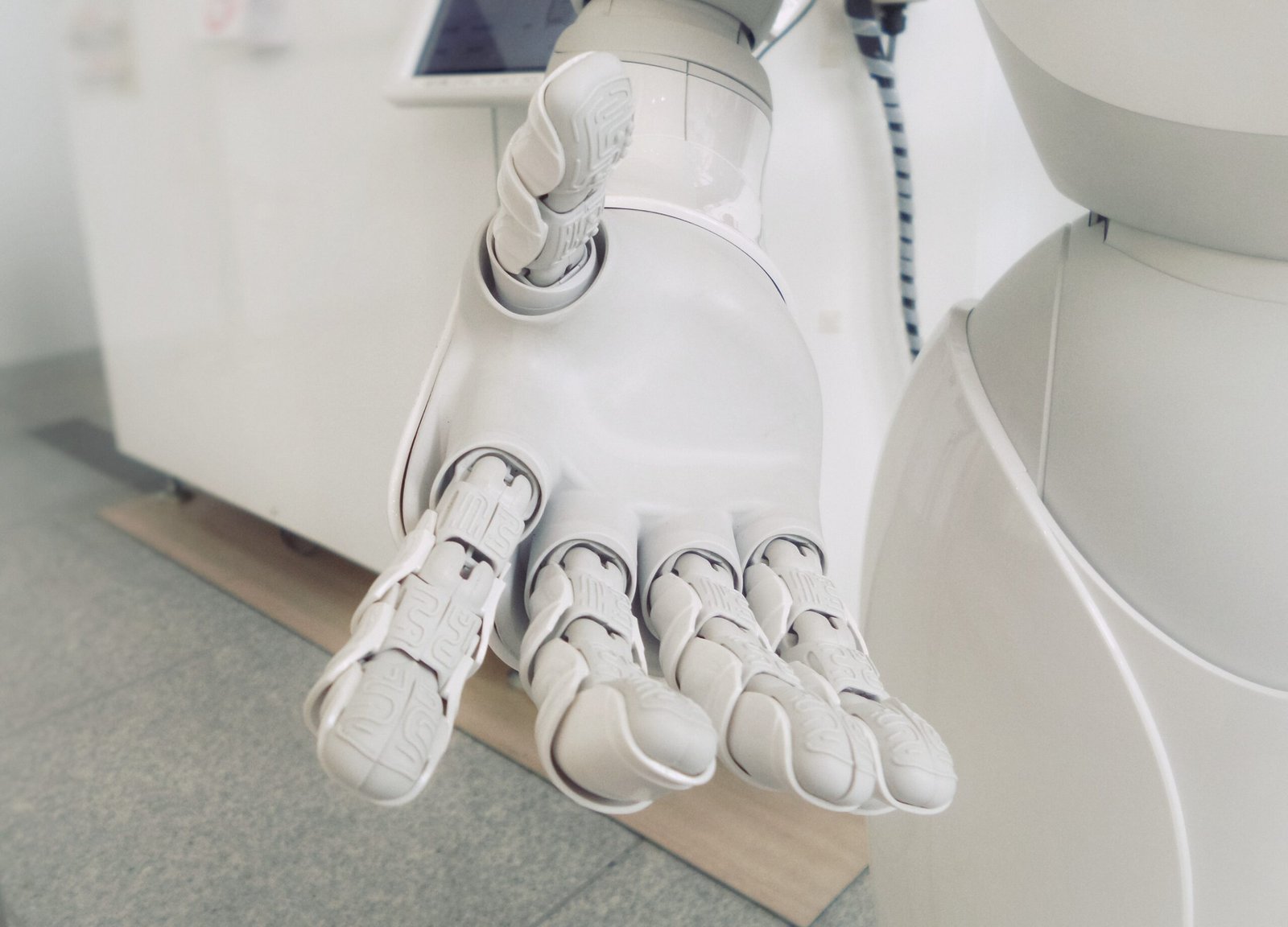Artificial intelligence, or AI, is a concept that has become increasingly popular in recent years. It refers to the ability of computers or machines to mimic certain aspects of human intelligence. From self-driving cars to virtual personal assistants, AI has found its way into various aspects of our daily lives. But what exactly does it mean? In simple terms, artificial intelligence involves creating computer systems that can perform tasks that would typically require human intelligence. This includes tasks such as learning, problem-solving, and decision-making.
Definition of Artificial Intelligence
Artificial Intelligence (AI) refers to the simulation of human intelligence in machines that are programmed to think and learn like humans. It involves the development of intelligent computer systems capable of performing tasks that typically require human intelligence, such as visual perception, speech recognition, decision-making, problem-solving, and natural language understanding. AI aims to create machines that can mimic human cognitive abilities, process large amounts of data, and make autonomous decisions.
History of Artificial Intelligence
The history of AI can be traced back to ancient times when Greek myths featured mechanical robots with human-like qualities. However, the formal development of AI as a scientific field began in the 1950s. The term “Artificial Intelligence” was coined by John McCarthy in 1956, and this marked the birth of AI as a discipline. In the following decades, AI research experienced periods of rapid advancement and setbacks. Significant milestones include the development of expert systems in the 1980s and the emergence of machine learning algorithms in the 1990s. Over time, AI has evolved into a multi-disciplinary field encompassing various domains such as machine learning, robotics, and natural language processing.

Branches of Artificial Intelligence
Artificial Intelligence can be broadly categorized into several branches, each focusing on different aspects of intelligent systems.
Machine Learning
Machine Learning is a branch of AI that focuses on enabling machines to automatically learn and improve from experience without being explicitly programmed. It involves the development of algorithms and statistical models that allow computers to analyze and interpret large datasets, identify patterns, and make predictions or decisions based on the learned patterns. Machine Learning has found applications in various fields such as image and speech recognition, recommendation systems, and predictive analytics.
Deep Learning
Deep Learning is a subfield of Machine Learning that aims to mimic the human brain’s neural networks in order to learn and solve complex problems. It involves the use of artificial neural networks with multiple layers of interconnected nodes, known as deep neural networks. Deep Learning has revolutionized AI by enabling machines to process and understand vast amounts of data, leading to breakthroughs in areas such as computer vision, natural language processing, and autonomous driving.
Natural Language Processing
Natural Language Processing (NLP) focuses on enabling computers to understand, interpret, and generate human language. It involves the development of algorithms and techniques that allow machines to process and analyze textual data, extract meaning, and generate appropriate responses. NLP has applications in various areas such as chatbots, sentiment analysis, machine translation, and voice recognition systems.
Robotics
Robotics combines AI with engineering to develop intelligent machines capable of interacting with their environment and performing physical tasks. Robotic systems involve the integration of sensors, actuators, and computer systems to enable machines to perceive their surroundings, make decisions, and execute actions. Robotics has seen advancements with the development of autonomous robots, industrial robots, and humanoid robots, with applications in manufacturing, healthcare, space exploration, and entertainment industries.
Narrow AI vs General AI
Artificial Intelligence can be classified into two types: Narrow AI and General AI.
Narrow AI, also known as Weak AI, refers to AI systems that are designed to perform specific tasks with high precision. These systems are programmed to excel in specific domains, such as image recognition or voice assistants, but lack the ability to generalize their knowledge to other domains. Narrow AI is the most prevalent form of AI today, powering various applications we encounter in our daily lives.
On the other hand, General AI, also known as Strong AI or Artificial General Intelligence (AGI), represents AI systems that possess the ability to understand, learn, and apply knowledge across different domains, similar to human intelligence. General AI aims to replicate human-like thinking processes and consciousness, enabling machines to perform any intellectual task that a human can do. While General AI is still largely theoretical and remains a future goal, researchers and technologists continue to work towards achieving this level of AI.

Applications of Artificial Intelligence
Artificial Intelligence has a wide range of applications in various fields, revolutionizing the way we live and work.
In healthcare, AI is transforming diagnosis and treatment by analyzing medical imagery, detecting diseases at earlier stages, and helping in drug discovery. AI-powered chatbots are improving customer service and support by providing instant help and personalized assistance. In finance, AI is used for fraud detection, stock market prediction, and algorithmic trading. AI is also making significant contributions in transportation, enabling autonomous vehicles and optimizing traffic flow. Additionally, AI is being used in education, agriculture, cybersecurity, entertainment, and many other sectors, with the potential to address complex problems and enhance productivity and efficiency.
Machine Learning in Artificial Intelligence
Machine Learning plays a crucial role in the advancement of AI. It involves the development of algorithms and models that enable machines to learn from data and improve their performance over time. Machine Learning can be categorized into three main types: supervised learning, unsupervised learning, and reinforcement learning.
Supervised learning involves training a model on a labeled dataset, where the input data is paired with corresponding correct outputs. The model learns to make predictions or classify new data based on the patterns it identifies in the training data. Unsupervised learning, on the other hand, involves training a model on an unlabeled dataset, where the model learns to discover patterns and relationships in the data without any specific pre-defined outcomes. Reinforcement learning focuses on training agents to interact with an environment and learn optimal actions through trial and error, based on receiving rewards or punishments.
Machine Learning algorithms such as decision trees, support vector machines, and neural networks are used to solve various problems, ranging from image and speech recognition to recommendation systems and predictive analytics. The availability of large datasets and advancements in computational power have fueled the rapid progress and adoption of Machine Learning in recent years.

Deep Learning in Artificial Intelligence
Deep Learning has emerged as a powerful technique within the field of AI. It focuses on training deep neural networks with multiple layers of interconnected nodes to learn complex representations of data. Deep Learning models excel in tasks such as image and speech recognition, natural language processing, and autonomous driving.
The key advantage of Deep Learning is its ability to automatically learn and extract features from raw data, eliminating the need for hand-engineering features. This allows deep neural networks to analyze and understand vast amounts of data, leading to improved performance and accuracy in tasks that were previously challenging for traditional machine learning algorithms. Deep Learning models, such as Convolutional Neural Networks (CNNs) and Recurrent Neural Networks (RNNs), have achieved state-of-the-art results in image classification, object detection, machine translation, sentiment analysis, and many other domains.
The success of Deep Learning can be attributed to advancements in computational power, the availability of large labeled datasets, and the development of efficient training algorithms, such as backpropagation, that enable the optimization of deep neural networks. As a result, Deep Learning has revolutionized AI and has become a cornerstone in various real-world applications.
Natural Language Processing in Artificial Intelligence
Natural Language Processing (NLP) focuses on enabling machines to understand and interact with human language. NLP involves the development of algorithms and techniques that allow computers to process, analyze, and generate natural language.
NLP encompasses several tasks such as speech recognition, natural language understanding, sentiment analysis, and machine translation. By applying techniques like text preprocessing, part-of-speech tagging, Named Entity Recognition (NER), and sentiment analysis, NLP algorithms can extract meaning, sentiment, and contextual information from textual data.
NLP has contributed to the development of various applications, including chatbots, virtual assistants, recommendation systems, and machine translation. These applications have transformed the way we communicate with machines, allowing us to interact naturally through spoken or written language.
Robotics in Artificial Intelligence
Robotics combines AI with engineering to develop intelligent machines capable of interacting with their environment and performing physical tasks. Robotics involves the integration and coordination of multiple components, such as sensors, actuators, and computer systems, to enable machines to perceive their surroundings, make decisions, and execute actions.
Robotic systems can range from simple industrial robots performing repetitive tasks to complex autonomous robots capable of exploring unknown environments or assisting in surgical procedures. The combination of AI algorithms with robotics enables machines to adapt to dynamic environments, learn from experience, and interact with humans in a more natural and intuitive way.
Robotics has found applications in various industries, such as manufacturing, healthcare, agriculture, and space exploration. Industrial robots have improved productivity and efficiency in manufacturing processes, while robotic surgical systems have facilitated minimally invasive procedures. Autonomous robots are being developed for tasks like search and rescue missions, exploration of hazardous environments, and even social interaction.
Ethical Considerations in Artificial Intelligence
As AI continues to progress and become more prevalent in society, ethical considerations become crucial. The development and deployment of AI systems raise important questions about privacy, bias, accountability, and the impact on the workforce.
Privacy concerns arise as AI systems often rely on large amounts of data, including personal information, to learn and operate effectively. The responsible handling and protection of this data become paramount to prevent misuse or unauthorized access.
Bias in AI algorithms is a significant concern as they can perpetuate or amplify existing social biases when making decisions or predictions. Bias can lead to unfair treatment, discrimination, and reinforcement of societal inequalities. Efforts are underway to develop fair and unbiased AI systems by addressing bias in data collection, algorithm design, and model evaluation.
Accountability is another aspect that needs careful consideration as AI systems become increasingly autonomous. Who should be responsible when AI systems make errors or cause harm? Establishing frameworks for accountability, transparency, and recourse becomes essential to ensure the responsible development and deployment of AI technologies.
Furthermore, there are concerns about the impact of AI on the workforce, with fears of job displacement and unequal distribution of economic benefits. It is essential to find a balance between automation and human work, ensuring that AI systems complement and augment human capabilities rather than replace them.
In conclusion, Artificial Intelligence encompasses a diverse range of technologies and applications that are transforming various industries and our day-to-day lives. From Machine Learning and Deep Learning to Natural Language Processing and Robotics, AI offers immense potential for solving complex problems and improving efficiency. However, ethical considerations and responsible development are necessary to ensure that AI technology benefits humanity and aligns with societal values.






